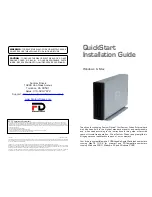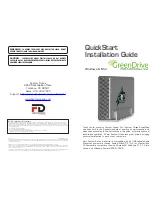
8.3
Sequential Operations
A sequential tape drive looks to the host computer as a stand-alone tape drive with an
operator supplying it with tapes. A host backup application that is not aware of tape
libraries can simply write its backup data to the drive until the tape becomes filled. It
then causes the tape to be rewound and ejected from the drive. The Medium-changer
can then insert the next tape needed to complete the backup operation. The host
application is completely unaware of how the next tape gets inserted into the drive as
well as where the tapes come from and go to. When the Medium-changer does the
work of supplying tapes to and removing them from a tape drive, the process is called
Sequential operation.
There are three types of Sequential operation: Sequential, Recycle and Dual Bin. For
Sequential or Recycle operation, a single contiguous set of cartridge locations (Input)
is assigned to each sequential drive for its exclusive use. Sequential operation stops
when the last cartridge has been returned to it original storage slot while Recycle
operation will restart the cycle after its completion. To put it another way –
Sequential operation is a single pass mode while the Recycle mode runs continuously.
In both of these modes, each tape cartridge is returned to its original storage location
after it is ejected from the tape drive.
For Dual Bin operation, two separate sets of magazine locations are assigned to each
sequential drive for its exclusive use. The Input set of locations is where the changer
gets cartridges to be placed in the sequential drive. The Output set is where those
cartridges are put after the drive has ejected them. The number of output locations
must be equal to or larger than the input locations.
There can be many Sequential or Recycle drives and each requires a set of magazine
storage locations. Each Dual Bin drive requires two sets magazine storage locations
(which do not have to be adjoining).
This flexible design allows the user to partition the library’s resources to best meet
overall system needs. See Chapter 11 for detailed information on Sequential
Operation.
8.4
Resource Inventory
The first order of business is to document precisely what is in your RLS. This data will
then be used when allocating resources to different partitions. The RLS-85XX library
supports up to five tape drives and 114 cartridges with the right side storage matrix.
The standard number of cartridge slots is 54 when the library only has the left side
storage matrix. The RLS-8350 library supports up to three tape drives and 50 cartridges
with the right side storage matrix. The standard number of cartridge slots is 22 when
the library only has the left side storage matrix.
If you are planning to partition the entire RLS physical library into more than one
logical library, you may want to create a planning worksheet, such as the example in
Table 8-3. By creating a worksheet in advance, you can minimize the time required to
511000 Rev. F
Resource Management
8-5
















































